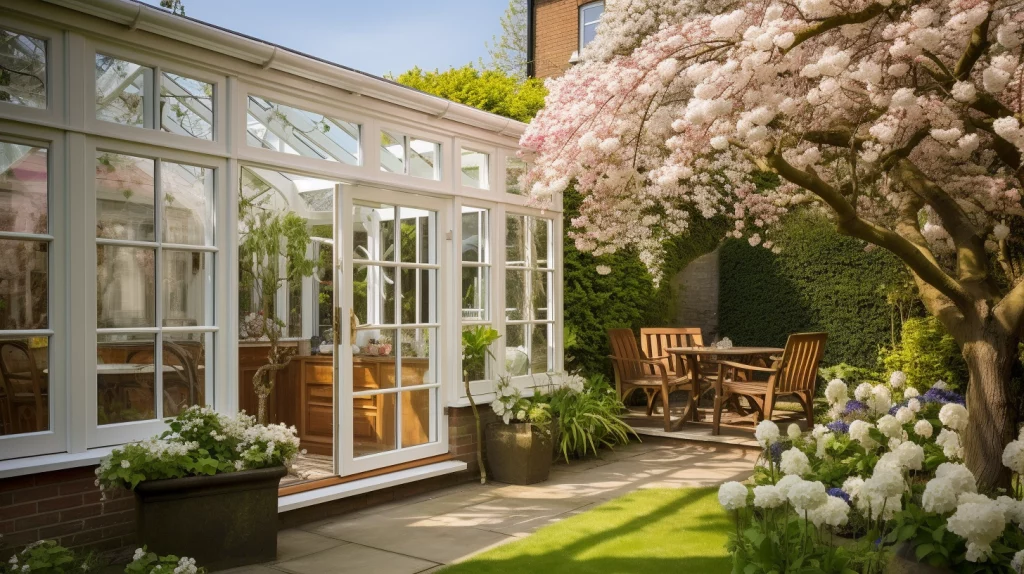If you’re considering adding to your home, one of the first questions that might cross your mind is do you need planning permission for a conservatory?
Let’s take a look into the details and break down the process so you have a better understanding.
What is planning permission?
Before looking at the specifics of planning for conservatories, it is important to clarify what planning permission is and is not.
In the UK, planning permission is essentially official consent from your local authority to proceed with certain types of building work or changes to the use of buildings. It ensures that any proposed changes to your house comply with local planning policies.
When you’re thinking about making your home bigger, there are some rules called permitted development rights. These rules let you add extra space to your house without having to get special permission, but you have to follow certain limits and conditions.
If you want to go beyond these limits, especially if your extension is more than 100 square metres, you’ll probably need to ask for householder planning permission. Keep in mind that larger projects might also come with a charge called the Community Infrastructure Levy.
If this sounds confusing, don’t worry! It’s a good idea to contact your Local Planning Authority before you start any work. They can give you advice and help you understand what you can and can’t do. It’s better to check first to avoid any issues later on.
Do you need planning permission for a conservatory?
The good news for many homeowners is that, in most cases, the answer is no, you won’t need planning permission for a conservatory. Permitted development rights often cover conservatory installations. However, there are conditions and limits, so it’s important to be aware of these.
Permitted development rights allow certain types of building work without the need for formal planning permission, providing a streamlined process for specific projects.
When do you need planning permission for a conservatory?
When your conservatory falls outside of permitted development rights, you may need to obtain planning permission. Let’s look at the conditions.
Permitted development conditions
The conservatory should not exceed 50% of the total area of land around the original house. It should not project forward of the principal or side elevation of the original house. Also, the maximum height of the conservatory should not exceed the highest part of the existing roof.
Size and location
The size and location of the conservatory play a crucial role. Generally, smaller conservatories that meet specified criteria are more likely to land within permitted development rights.
Material and design
The use of materials and the design of the conservatory should be in harmony with the existing property and its surroundings. It’s advisable to avoid materials or designs that may significantly impact the external appearance of the house.
Conservation areas plus listed buildings
If your property is a listed building or built in a conservation area, additional restrictions may apply. In such cases, it’s essential to consult with the local planning authority.
Building regulations
While planning permission may not be necessary, building regulations approval is likely required. Building regulations ensure that the construction meets essential safety and energy efficiency standards.
Neighbour consultation scheme
In some cases, a Neighbour Consultation Scheme may apply. This involves notifying adjacent properties, and if there are no objections within a specified timeframe, the conservatory can proceed.
Professional advice
It’s always advisable to seek professional advice, especially if your project involves unique circumstances or if you have concerns about compliance with regulations.
Alternative uses
Converting a conservatory into a habitable room, such as a bedroom, may require planning permission and compliance with building regulations. Consider the intended use of the conservatory and ensure it aligns with regulations.
So, by being aware of these conditions and limits, homeowners can better navigate the process of installing a conservatory within the framework of permitted development rights. However, individual circumstances vary, so we recommend you consult with local planning authorities or professionals to ensure compliance with specific regulations applicable to your property.
What size conservatory can you have without planning permission?
In many cases, homeowners can add a conservatory to their property without the need for planning permission, thanks to permitted development rights. However, it’s crucial to adhere to specific criteria to ensure compliance.
Size limitation
The conservatory should not surpass 50% of the total land area surrounding the original house. This means that if your property has a garden of 200 square metres, the conservatory’s footprint should not exceed 100 square metres.
Projection boundaries
It’s essential to consider the projections of the conservatory. Specifically, the structure should not extend forward beyond the principal or side elevation of the original house. This ensures that the conservatory does not protrude too far into the outdoor space.
For example, imagine you own a property with a spacious garden. You decide to improve your living space by adding a conservatory to the back of your house. Here’s how the criteria come into play:
- Determining the size: Your garden measures 300 square metres. To comply with the permitted development criteria, the conservatory’s size should not exceed 150 square metres (50% of the total land area). In this case, you plan for a conservatory with a footprint of 120 square metres, well within the permissible limits.
- Positioning considerations: Examining the layout of your house, you ensure that the conservatory does not extend beyond the principal or side elevation. By aligning it with the rear of the house, the conservatory integrates into the existing structure without projecting forward.
By carefully sticking to these criteria, you can confidently proceed with your conservatory project, secure in the knowledge that it falls within the scope of permitted development rights.
Remember, while these criteria provide a general guideline, individual circumstances may vary, and it’s advisable to seek professional advice or consult local planning authorities for a precise assessment tailored to your property.
What is the 4 year rule for a conservatory?
The 4 year rule comes into play when dealing with extensions and conservatories. Essentially, if your conservatory has been in place for more than four years, it might be considered immune to planning enforcement.
Now, here’s the twist. While the 4 year rule seems straightforward, it has its complexities. The immunity it provides doesn’t mean an absolute green light; certain conditions and intricacies may apply.
It’s highly advisable to seek professional advice when navigating the ins and outs of this rule.
Consulting with an expert can help you determine whether your specific conservatory situation qualifies for this exemption.
They can guide you through the details, ensuring that you comply with all regulations and avoid any unexpected issues.
Can you turn a conservatory into a room without planning permission?
If you plan to turn your conservatory into a more habitable room, you may need to apply for a change of use or seek approval for building regulations. The process typically involves upgrading the conservatory’s structure to meet the same standards as a traditional extension. This means ensuring proper insulation, a solid roof, and compliance with building regulations.
The key is to improve the thermal efficiency and overall build quality of the space. By replacing the standard conservatory roof with a more substantial and insulated one, like CosyPanels, you not only improve the room’s comfort but also eliminate the need for additional planning permissions.
However, it’s essential to keep an eye on certain considerations, such as the size and location of your property, as these can affect the permitted development rights. As always, it’s best to consult with a professional or your Local Planning Authority to confirm your specific circumstances and ensure compliance with regulations.
Conservatory Planning Permission Checklist
Here’s a quick checklist to help you understand if you need planning permission for your conservatory.
- Check the size and location against permitted development conditions
- Be aware of the 4-year rule for immunity from planning enforcement
- Seek professional advice if planning permission is uncertain
FAQs
Q: Do you need planning permission for a lean-to conservatory?
A: Lean-to-conservatories often fall within permitted development rights, but the specifics depend on the size, location, and design. Always check the specific conditions to confirm whether planning permission is required. Some cases where you might need planning permission for a conservatory include your house being in a conservation area or if it’s grade II listed.
Q: Do you need planning permission for a log burner in a conservatory?
A: Installing a log burner in a conservatory may require planning permission, as it involves alterations to the existing structure and could impact the overall use of the conservatory. However, the need for planning permission for a log burner can vary based on several factors, including Permitted Development Rights, whether it is a listed building or in a Conservation Area, and other building regulations.
Even if planning permission is not required, you must always adhere to building regulations. This ensures the log burner installation meets safety and efficiency standards, addressing factors such as ventilation, flue installation, and fire protection.
Q: How can I improve my conservatory without the need for planning permission?
A: To fully insulate your conservatory without the need for structural alterations, take a look at the benefits of CosyPanels for your conservatory. They will provide a roof assessment and discuss all of your options with you. They will then provide a quote that will include any issues picked up from the site survey. If you’d like to find out more, contact CosyPanels today for your free no-obligation quote and see how you can transform your home.
Although this blog post provides guidance, you should always consult your local authority for specific advice tailored to your situation.


